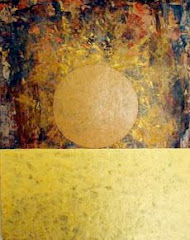I believe that it's very risky to have plywood under the oven particularly if the plywood is sitting on a flat surface where air can't circulate.
However, if your floor mass is really substantial, I think a wooden base may be a little more protected from damaging heat, but I'm not certain about this.
If it's a tiny demonstration oven, then it might not matter because it would be difficult to bring a tiny oven up to a high operating temperature, but even here, there might be exceptions.
Based on what I've observed, I believe it's best not to have wood under the oven. Period.
Here is a photo of a demonstration portable brick oven where the brick floor sits directly on 3.5" of perlite. Supporting the oven is 3/4"plywood. The oven was assembled on a wooden picnic table, and the heat from the oven damaged the table. For safety purposes, the oven should have been assembled on saw horses and probably twice as much perlite should have been used.








